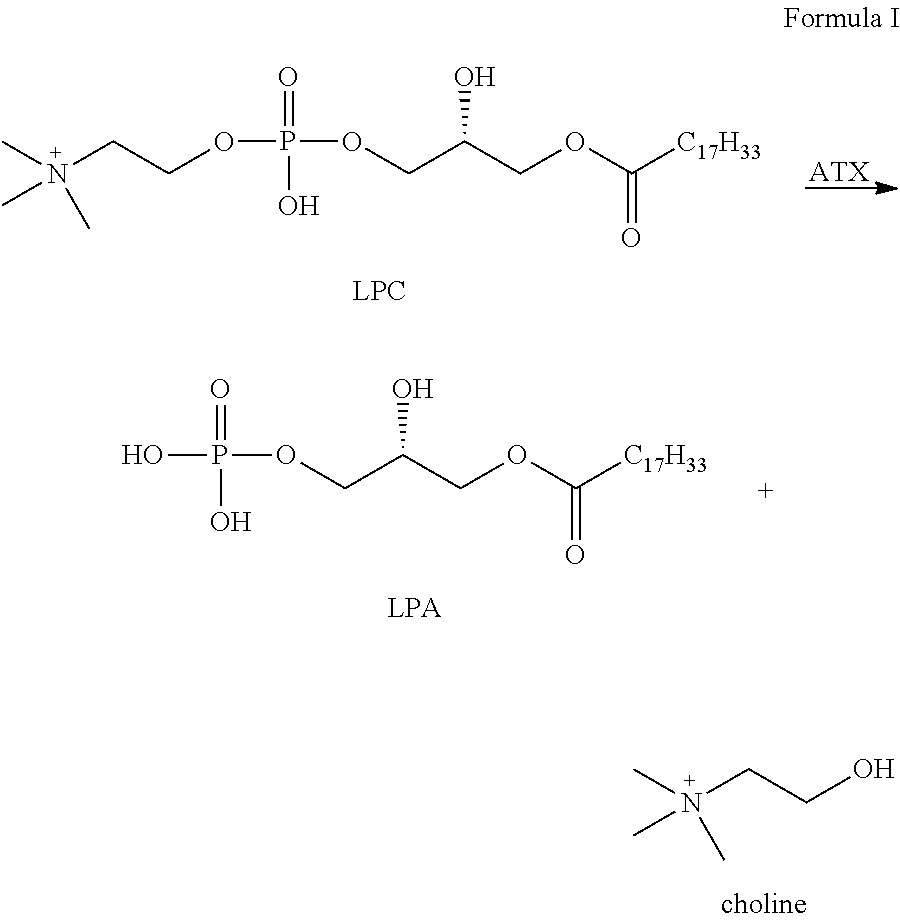Autotaxin inhibitors
a technology of autotaxin and inhibitor, which is applied in the field of autotaxin inhibitors, can solve the problems of inability to achieve the effect of realizing such a result, unable to achieve the effect of bioactive and potentially dangerous processing, and can reduce the conversion of lpc to lpa, reduce the fs-3 hydrolysis, and be easily produced
- Summary
- Abstract
- Description
- Claims
- Application Information
AI Technical Summary
Benefits of technology
Problems solved by technology
Method used
Image
Examples
Embodiment Construction
[0015]The determination of proper ATX inhibition compounds was based upon the realization of certain structural requirements for proper reactivity with the ATX compound itself. Extensive review of possible compounds was undertaken through computer modeling of similarly structured compounds to the types noted above that exhibited ATX inhibition, but did not pass oral bioavailability test protocols. It was determined, for instance, that certain types of backbone compounds were effective, generally, and in theory for ATX inhibition. However, closer scrutiny was needed to effectively analyze the actual capability of each type of compound.
[0016]In essence, it was determined through a model of the ATX catalytic domain, residues 162-539 from the sequence of human ATX, developed by homology to Xac NPP, that certain basic configurations of ATX inhibitors were most likely necessary. Within this model, it was noted that all but 4 (1%) of the 317 non-proline and non-glycine residues occupy regi...
PUM
| Property | Measurement | Unit |
|---|---|---|
| pH | aaaaa | aaaaa |
| pH | aaaaa | aaaaa |
| emission wavelengths | aaaaa | aaaaa |
Abstract
Description
Claims
Application Information
 Login to View More
Login to View More - R&D
- Intellectual Property
- Life Sciences
- Materials
- Tech Scout
- Unparalleled Data Quality
- Higher Quality Content
- 60% Fewer Hallucinations
Browse by: Latest US Patents, China's latest patents, Technical Efficacy Thesaurus, Application Domain, Technology Topic, Popular Technical Reports.
© 2025 PatSnap. All rights reserved.Legal|Privacy policy|Modern Slavery Act Transparency Statement|Sitemap|About US| Contact US: help@patsnap.com



